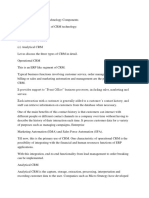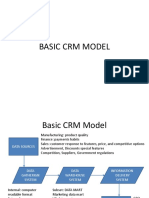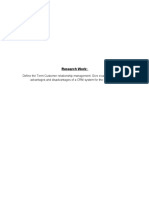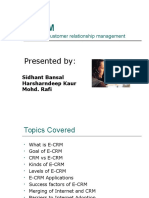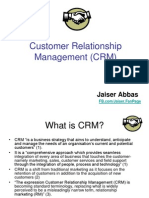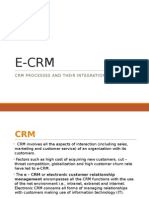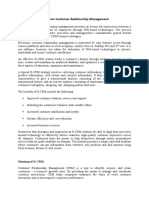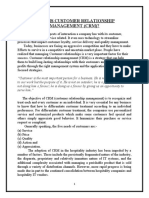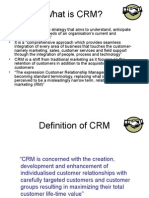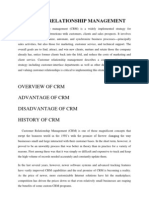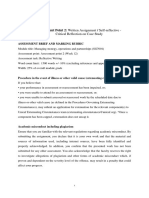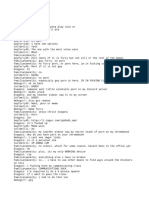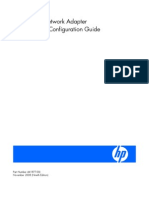0% found this document useful (0 votes)
9 views31 pagesCRM Module-4
E-CRM, derived from e-commerce, utilizes information technology to manage customer relationships more efficiently than traditional CRM by integrating internal resources and external marketing strategies. Key features include web-based access, personalized views, enhanced security, and improved customer service, leading to increased loyalty and more effective marketing. Additionally, the document discusses components like voice portals, virtual customer representatives, and data warehousing, emphasizing the importance of data mining and CRM software in optimizing customer interactions.
Uploaded by
Ashita SavsaniCopyright
© © All Rights Reserved
We take content rights seriously. If you suspect this is your content, claim it here.
Available Formats
Download as PDF, TXT or read online on Scribd
0% found this document useful (0 votes)
9 views31 pagesCRM Module-4
E-CRM, derived from e-commerce, utilizes information technology to manage customer relationships more efficiently than traditional CRM by integrating internal resources and external marketing strategies. Key features include web-based access, personalized views, enhanced security, and improved customer service, leading to increased loyalty and more effective marketing. Additionally, the document discusses components like voice portals, virtual customer representatives, and data warehousing, emphasizing the importance of data mining and CRM software in optimizing customer interactions.
Uploaded by
Ashita SavsaniCopyright
© © All Rights Reserved
We take content rights seriously. If you suspect this is your content, claim it here.
Available Formats
Download as PDF, TXT or read online on Scribd
/ 31


